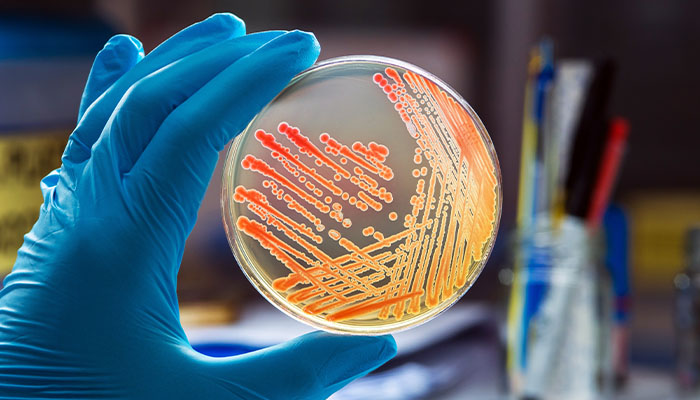Queensland researchers have discovered that a mutation allows some E. coli bacteria to cause severe disease in people while other bacteria are harmless, a finding that could help to combat antibiotic resistance.
Professor Mark Schembri and Dr Nhu Nguyen from IMB and Associate Professor Sumaira Hasnain from Mater Research found the mutation in the cellulose making machinery of E. coli bacteria.
Professor Schembri said the mutation gives the affected E. coli bacteria the green light to spread further into the body and infect more organs, such as the liver, spleen and brain.
"Bad' bacteria can't make cellulose
“Our discovery explains why some E. coli bacteria can cause life-threatening sepsis, neonatal meningitis and urinary tract infections (UTIs), while other E. coli bacteria can live in our bodies without causing harm,” Professor Schembri said.
“The ‘good’ bacteria make cellulose and ‘bad’ bacteria can’t.”
Bacteria produce many substances on their cell surfaces that can stimulate or dampen the immune system of the host.

Inflammation and spreading through the body
“The mutations we identified stopped the E. coli making the cell-surface carbohydrate cellulose and this led to increased inflammation in the intestinal tract of the host,” Professor Schembri said.
“The result was a breakdown of the intestinal barrier, so the bacteria could spread through the body.”
In models that replicate human disease, the team showed that the inability to produce cellulose made the bacteria more virulent, so it caused more severe disease, including infection of the brain in meningitis and the bladder in UTIs.

Finding new ways to prevent infection
Associate Professor Hasnain said understanding how bacteria spread from intestinal reservoirs to the rest of the body was important in preventing infections.
“Our finding helps explain why certain types of E. coli become more dangerous and provides an explanation for the emergence of different types of highly virulent and invasive bacteria,” she said.
Professor Schembri said E. coli was the most dominant pathogen associated with bacterial antibiotic resistance.
“In 2019 alone, almost 5 million deaths worldwide were associated with bacterial antibiotic resistance, with E. coli causing more than 800,000 of these deaths,” he said.
“As the threat of superbugs that are resistant to all available antibiotics increases worldwide, finding new ways to prevent this infection pathway is critical to reduce the number of human infections.”
The collaboration included teams from UQ’s School of Biomedical Sciences led by Associate Professor Jana Vukovic and from Griffith University’s School of Pharmacy and Medical Sciences led by Professor Glen Ulett.
The research was published in Nature Communications.



